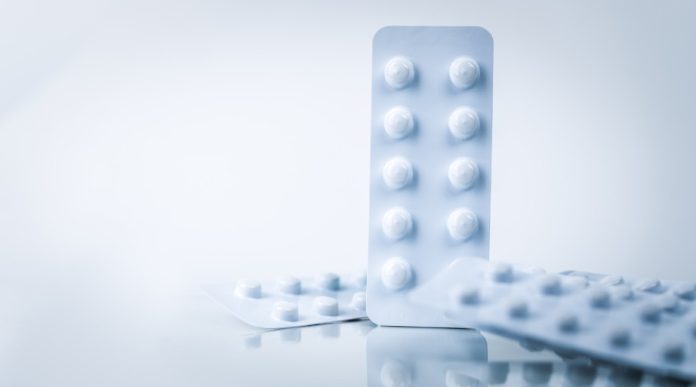Table of Contents
Over the years, pharmacy packaging has undergone monumental changes, driven by innovation, regulation, and the growing need for safety and accessibility.
Among these developments, child-resistant packaging has become a focal point, with new laws and technologies reshaping how pharmaceutical companies package their products.
This packaging evolution has implications not only for safety and compliance but also for design, manufacturing, and future technologies.
This article will explore how child-resistant packaging is impacting the pharmaceutical industry, highlighting its significance, the technologies driving innovation, and what lies ahead for manufacturers and suppliers.
Why the Push for Child-Resistant Packaging?

The introduction of child resistant packaging (CRP) has been driven largely by safety regulations.
Many children are admitted to hospitals because they accidentally ingest medications, which has prompted governments worldwide to enforce stricter packaging laws, mandating child-resistant features for potentially harmful substances.
Key regulations highlight the importance of making medications less accessible to children while still allowing ease of use for adults, particularly those who may have physical limitations like arthritis.
Striking this balance is challenging but critical, and it’s reshaping packaging strategies within the pharmaceutical sector.
How Technology is Revolutionising Child-Resistant Design?
At the heart of these changes lies technology, which is enabling the development of smarter, safer, and more intuitive packaging solutions.
Advances in materials, design, and manufacturing processes are making it possible to meet safety regulations while ensuring user-friendliness. Here’s how technology is playing a vital role:
1. Smart Packaging
Technologies are now being integrated into pharmaceutical packaging. Some CRP designs include digital reminders or smart caps that alert patients when it’s time to take their medication.
While these features primarily support patient adherence, many designs also incorporate child-resistant mechanisms, combining convenience with safety.
2. Material Innovation
The materials used for child-resistant packaging have advanced significantly. Engineering tamper-proof and child-resistant features while still being lightweight, cost-effective, and recyclable are especially critical as the pharmaceutical industry works towards reducing its environmental footprint.
3. Ease of Use Through Ergonomics
New CRP designs focus heavily on ergonomics, ensuring that older adults can open medication packaging with minimal effort.
Clever designs include squeezable or push-and-turn mechanisms that are challenging for children but manageable for adults with reduced dexterity.
4. Customised Solutions
Pharmaceutical manufacturers are increasingly turning to customised CRP solutions. Advances in 3D printing and prototyping technology allow for the rapid development and testing of different design options, ensuring compliance with regulations while addressing user pain points.
Impacts on Manufacturing and Supply Chains
The shift towards child-resistant packaging has had a ripple effect on manufacturing processes and supply chain management in the pharmaceutical industry:
1. Greater Investment in R&D
To stay competitive and meet growing demands for CRP designs, manufacturers are significantly increasing their research and development budgets.
Developing new products that efficiently combine safety, accessibility, and aesthetics requires collaboration among engineers, designers, and compliance experts.
2. Streamlining Production
The need for precision in CRP mechanisms has pushed manufacturers to invest in state-of-the-art production lines.
Automation and robotics are becoming mainstream in factories to ensure consistency and scalability while reducing production costs.
3. Sustainability Challenges
The demand for sustainability is reshaping packaging priorities. While integrating child-resistant features, manufacturers are also tasked with reducing material waste and ensuring that packaging meets recycling standards.
Bio-based plastics and other green materials are emerging as ideal choices for achieving both safety and environmental goals.
The Future of Child-Resistant Packaging

As technological innovation continues to advance at a rapid pace, the landscape of child-resistant packaging in pharmaceuticals is set to evolve even further. Here’s what the future may hold:
1. Personalisation
Child-resistant solutions could become more personalised, catering to individual patient needs.
For instance, specific colours, shapes, or smart features may be implemented to assist patients with cognitive or physical challenges.
2. Blockchain for Authenticity and Safety
Blockchain technology could play an essential role in the future of CRP.
By integrating blockchain into packaging, manufacturers can ensure product authenticity, track supply chain processes, and even store safety-related data, contributing to tamper-proof packaging solutions.
3. Automation in Design and Testing
AI-driven automation could streamline both the design and testing of CRP solutions. AI algorithms can simulate regulatory tests, determining early in the design stage whether a product would pass child-resistance and senior-friendliness standards, saving time and resources.
4. Global Standardisation
With globalisation intensifying, manufacturers may increasingly push for harmonised packaging standards across countries. This would reduce the complexity of meeting varying regional-specific rules.
Why Child-Resistant Packaging is Here to Stay?
Child-resistant packaging isn’t just a regulatory requirement—it’s a moral obligation for the pharmaceutical industry, ensuring the safety of the end user.
With advances in technology, the industry is rising to the occasion, creating packaging that protects children while catering to the diverse needs of adult patients.
Innovations in CRP are already improving the safety, accessibility, and sustainability of pharmaceutical packaging.
By investing in cutting-edge materials, technologies, and manufacturing processes, businesses across the pharmaceutical sector are demonstrating their commitment to patient care and product integrity.
Final Thoughts
The growing emphasis on child-resistant packaging represents a significant and ongoing transformation in how pharmaceuticals are developed, packaged, and distributed.
Whether through advancements in design, the adoption of sustainable practices, or the incorporation of smart solutions, CRP is not just about compliance—it’s about creating a safer and more responsible pharmaceutical industry.


